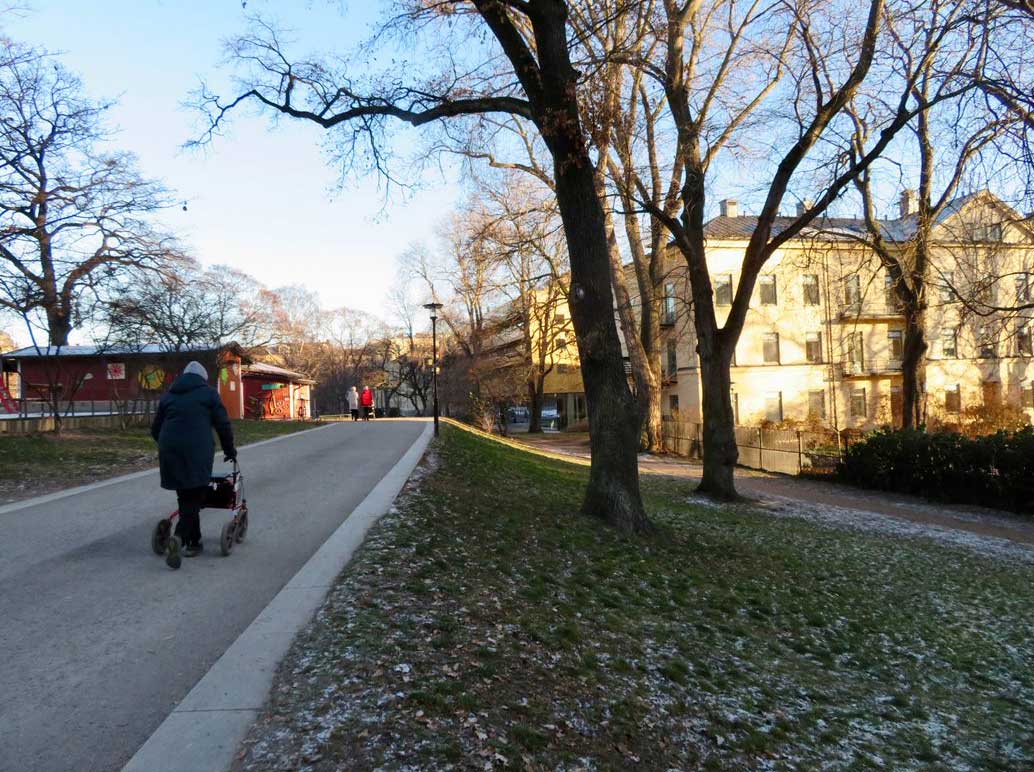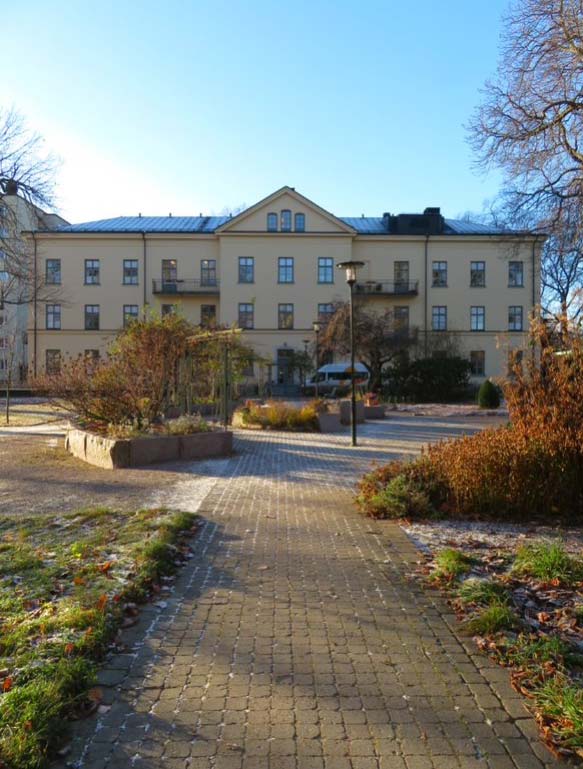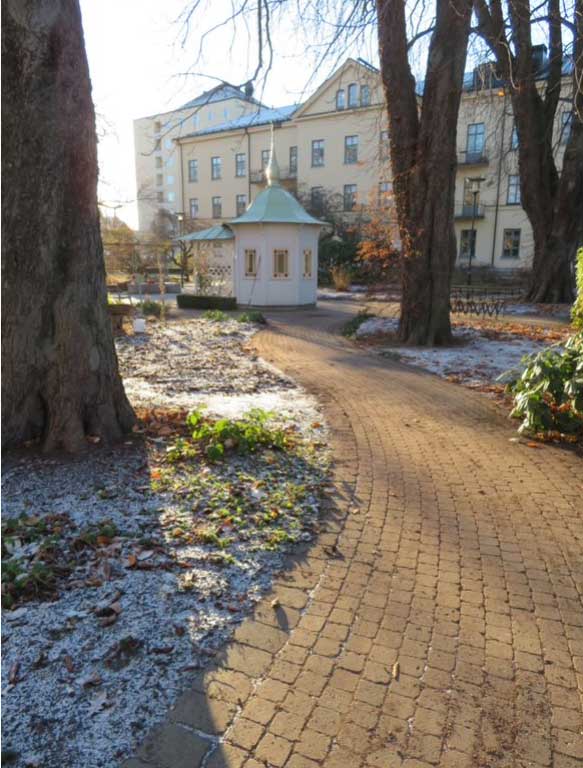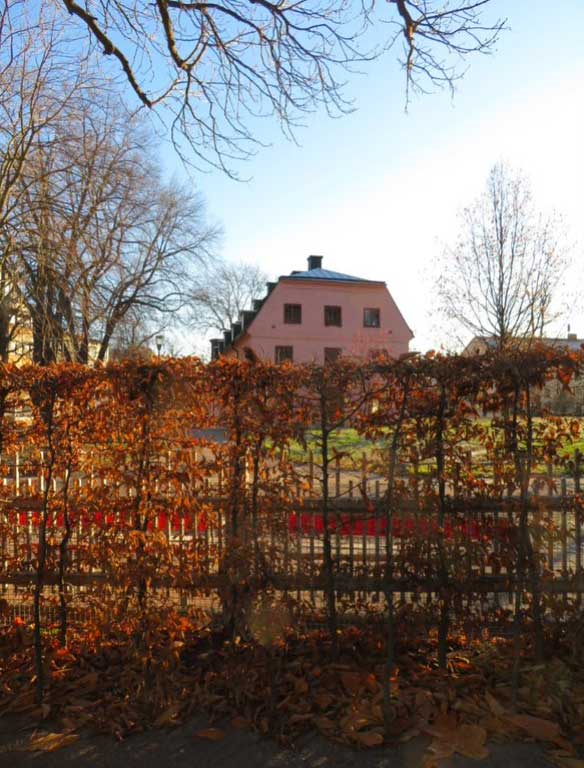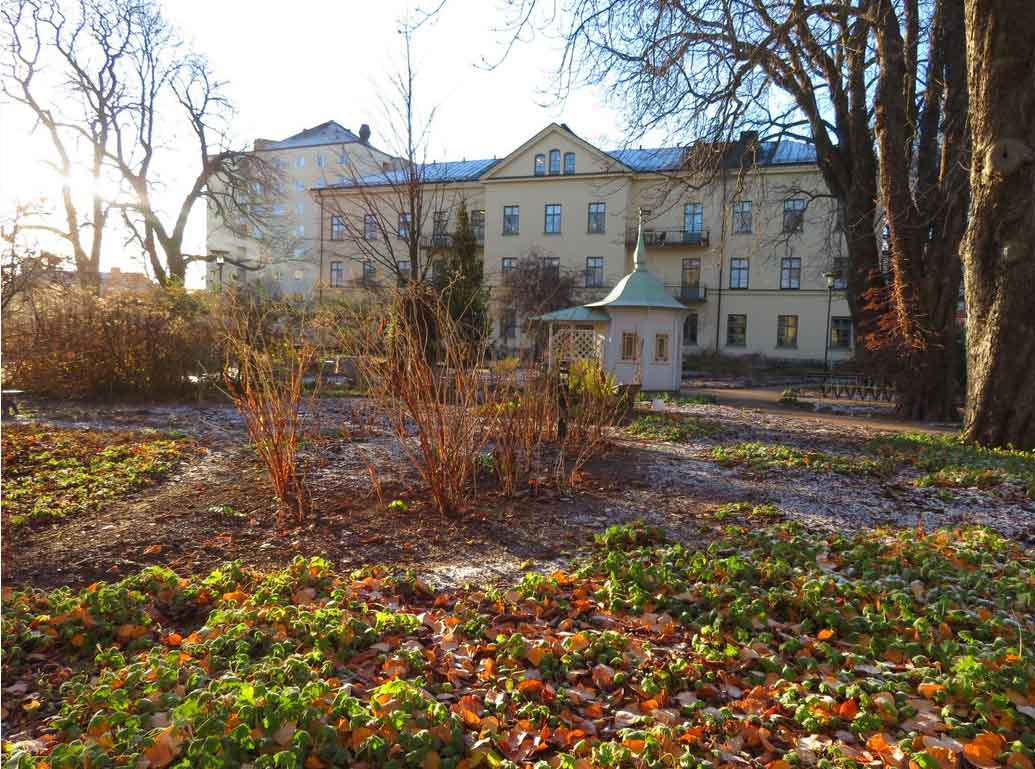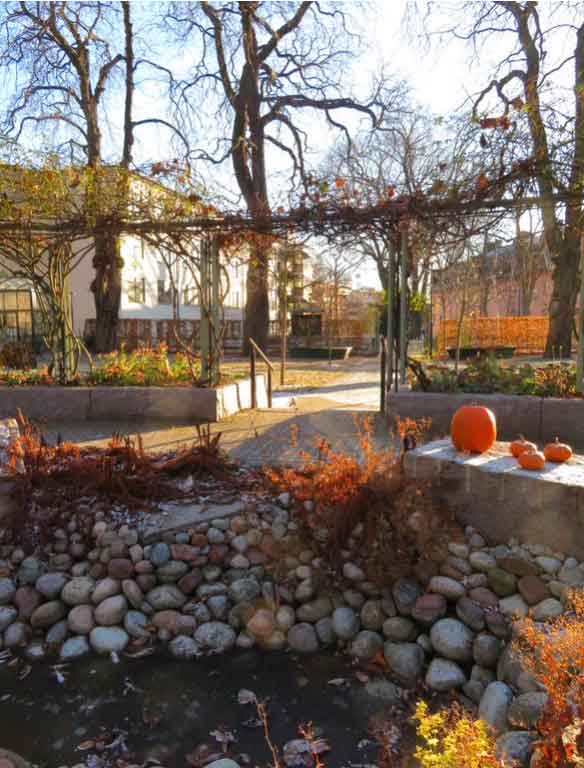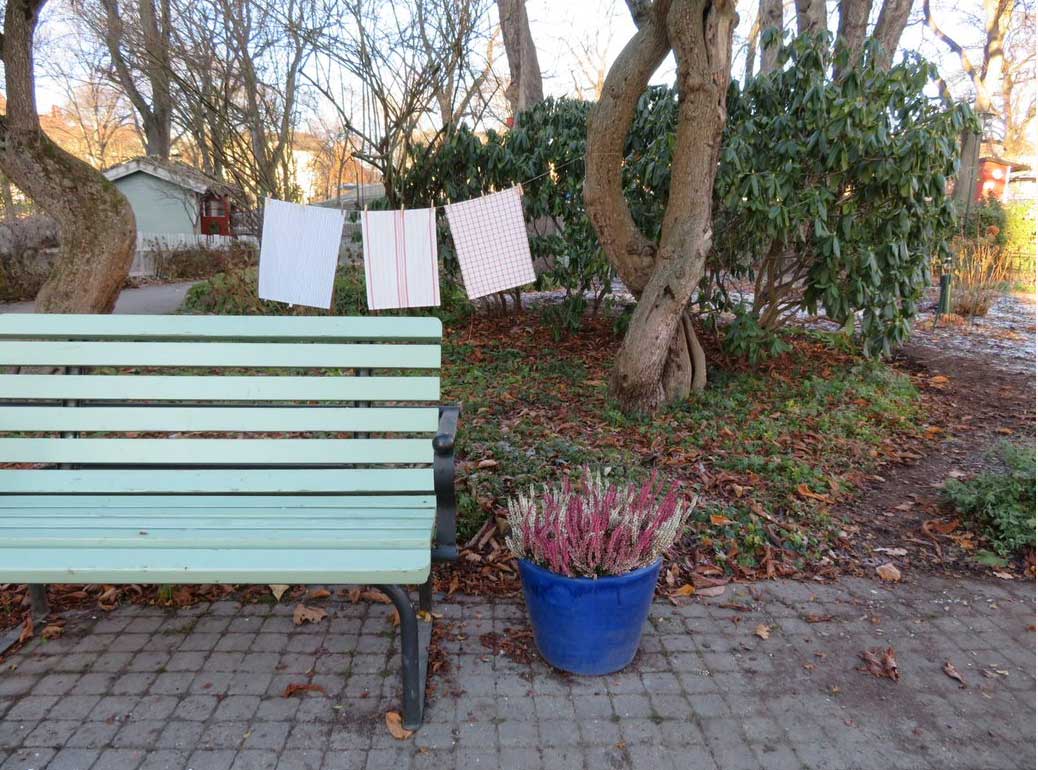We are working on the theme of town centre living and a caring place and have invited a conversation on the ten principles of a caring place. In this blog, Anna Roberts writes about the public gardens seen in Sinnenas Trädgård Stockholm, which is related to principle two: accessible quality external environments.
Close cultural context
Japan and Sweden are currently transitioning into super-ageing societies, as a result they are ahead of the curve in creating design solutions for ageing users. In travelling to the two countries I found examples of design for ageing that are considered more diverse project types across the scales of the built environment from city planning through to small community projects.
Sweden offers a close cultural context with Scotland and has begun to implement a different approach to environmental adaptation for ageing populations. The country also works hard to develop community projects and initiatives to address the growing issues we face in providing health and social care for older generations, the residential care home development of Sinnenas Trädgård in Stockholm offered some interesting lessons in care home location and environment.
Sinnenas Trädgård: Garden of the senses in Stockholm
Stockholm's Garden of the Senses is a small, publicly accessible garden designed for elderly people. The therapeutic garden is situated between two care home buildings set within a wider park in the Vasastan district of the city. The garden is spacious, carefully thought out and adheres to all the standard requirements of creating dementia-friendly spaces, but it does this very well.
The space has:
- a highly legible layout with a central focal point and smaller character areas
- figure of eight pathways (looped paths help to avoid the confusion of reaching a dead-end for dementia sufferers)
- wide, clear and flat pathways
- great planting variety such as climbing hops, Virginia creepers, clematis, gooseberries, strawberries, rhubarb. The site has also made use of mature pre-existing trees. The planting helps to create smells, sounds and colour
- shelter from the weather
- domestic touches and reminders of home
- seasonal interest
- enclosed space with non-oppressive fences and gates
- services access
The architecture of the neighbouring care homes is sensitively designed and resembles the apartment blocks of Stockholm.
Therapeutic garden
The two care homes and therapeutic garden are set within the public park Vasaparken in central Stockholm. The park is clearly visible from the garden with a sensitive fence design that prevents the garden from feeling hemmed in. Opposite the garden, on the park side is a nursery and children’s play area. Next to the care home is a brand new ‘flashy’ building housing designers offices and cafes. The garden and the care homes are part of the community, are visible and welcomed.
(A key aspect to mention is that the design of parks here help to avoid anti-social behaviours that we commonly have in the UK. Most parks have active frontage with apartment block entrances, shops, schools, churches, set within the parks. This creates a good flow of people and passive surveillance that deters lesser desirable behaviours.)
Too often there’s a propensity to make care homes ‘high security’ sites and while we do need to put the safety of the inhabitants first we don’t want to make them feel distanced from the wider community. The ‘Economic Commission for Europe argues that there is a need to “ensure full integration and participation of older persons in society” and “to promote a positive image of ageing and older persons”’. By integrating care homes better into our environments we are able to encourage inter-generational exchange, yet also help to reduce the negative associations many have with care homes.
About the author
Amber Roberts earned a doctorate from Manchester School of Architecture before practising as a landscape architect in Glasgow and the Cairngorms. In 2018 she was awarded the Mark Turnbull Travel Award from the Landscape Institute Scotland to travel to Sweden and Japan to learn more about urban design for ageing.
Her interest in the subject stems from witnessing first-hand the limiting factor that (badly designed) environments played on her elderly grand-parents' health in their later years. She has since conducted research in Europe, Asia and America and hopes to promote the benefits of age-friendly design in creating greater health equity.
Header image credit: Amber Roberts
Share your stories on a caring place
We are developing and inviting a conversation on a caring place through our social media channels and on this website. If you'd like to share you knowledge and experiences of what it takes to design for a caring place, get in touch.

